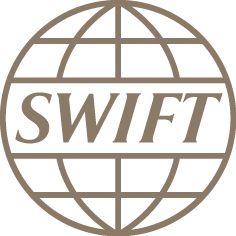Swift hopes for harmony with 'new kids on the blockchain'

This year at Sybos a group of distributed ledger heavyweights from banks and startups will gather together on stage in a session titled "New Kids on the Blockchain".
The session will include the likes of Oliver Bussmann, CTO at UBS; Adam Ludwin, CEO, Chain; Preston Byrne, co-founder Eris Industries; and Dan O'Prey, CMO at Digital Asset Holdings.
Swift, which is edging towards a world of real time payments using brand new peer-to-peer technology, has been looking closely at distributed ledger systems. Swift's Innotribe startup programme worked with some 370 young tech companies this year. It counts Digital Asset-owned Hyperledger and Magnr, which is also offering enterprise blockchains, among its 60 finalists.
Fabian Vandenreydt, head of markets management, Innotribe and the Swift Institute, told IBTimes: "We (ie, the industry) are doing real time transactions today without distributed ledger technology.
"I think the distributed ledger technology can maybe compliment in certain areas. It's always dangerous to consider something as a panacea, a silver bullet. Because it never is actually."
Vandenreydt said there are lots of requirements in the industry in Europe and beyond for real time payments. He also said "the shortening of cycles for securities post trade transactions might require all of us to move towards real time and that can be done actually using technologies today - all the ones we are building".

Swift carries on research through Innotribe and also via the Swift Institute, a network of 200 universities among research into financial services is carried out for the benefit of the industry.
Vandenreydt said Swift has just launched two grants looking at how distributed ledger technology can work in the securities industry from both an economic and regulatory standpoint.
Swift also does its own internal research. "We have research labs where we test and analyse the various technologies that underpin distributed ledgers.
"We talk about that with our clients very much from a business-relevance standpoint. I would say we are on the ball.
Vandenreydt recognises the need for global standards to be deployed and also the need for new technologies to interoperate with the legacy systems.
"It still has to work with the legacy systems, which are not going to be replaced in one or two or three or four or five years. That's an important factor. If not it needs to target a legacy system-free business domain.
"We always ask - can it scale, is it resilient, is it secure, can it keep confidentiality, how is identity management performed - we always look at all those aspects and it's the same for distributed ledgers."
Vandenreydt said adherence to global financial crime compliance requirements and data privacy tended to be thorny issues. Swift has spent a lot of time and effort looking at ways to screen transactions across borders.
Blockchain proponents suggest that such things could be automated within a shared ledger system provided each address would be tagged with its country, at the time that it's given permission to transact. Then different logic would be applied by the blockchain for transactions between countries, with perhaps an extra piece of approval required.
Vandenreydt said: "Financial crime compliance is very complex. I think it's not only a question of coding. It is data intensive. It's an awful lot of data that you have to manage in a standardised way.
"It's a vast industry and there are a lot of things to look at. And those things are interconnected. If you start improving a process somewhere it has an impact somewhere else.
Vandenreydt said governance will also be key: "Who is part of this and who is not? Who is part of a closed environment and who is not? How many ledgers do you need? Is the ledger by asset class or ledger by geography, or an uber ledger with everything in it?"
He welcomed the R3 announcement bringing banks together to look at common standards and protocols for blockchain technology.
"I think it's great. I think the adoption of standards takes some time and will go through various iterations. I think the R3 discussion is first related to the front office of the banks. There are a certain number of challenges there, but there might be different challenges as well, more in the middle and back office of the banks. I don't think there will be one solution that is all-encompassing. You don't have that today either."
Enterprise blockchain architects refer to messaging built on top of the protocol layer in technology stack which operate within a distributed ledger system.
Vandenreydt said: "The distributed ledger messaging could be an additional way to use the Swift network. That really varies depending on the implementation. It depends also on the number of people you want to reach in a safe way. I think one of the aspects of Swift today is the reach of our network, the thousands of financial institutions we have on the network."
Regarding a possible disruption of Swift's position in the ecosystem, he added: "I think it's a natural reflex to look at the incumbents when you want to come up with a disruption. But incumbents can be innovative too, especially the ones who are open to work with possible new entrants. I think it's also the role of Swift to come up outside with some thought leadership and explain how all this can work in harmony."
© Copyright IBTimes 2025. All rights reserved.






















